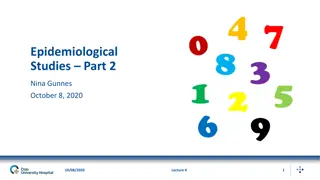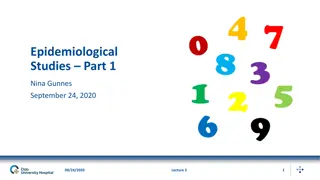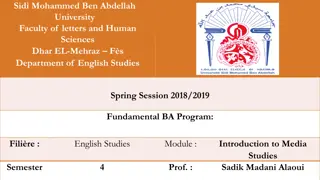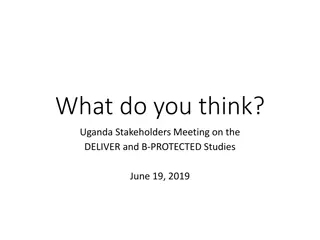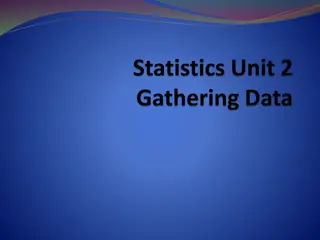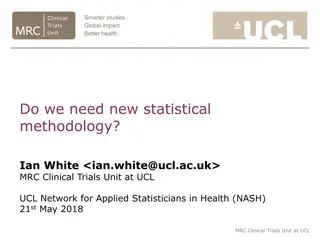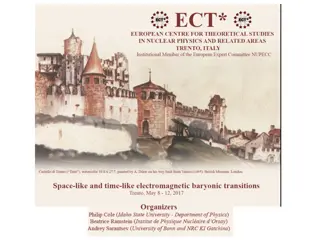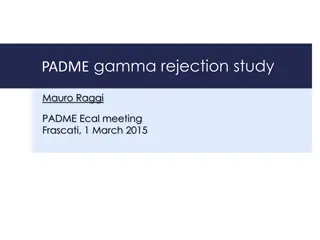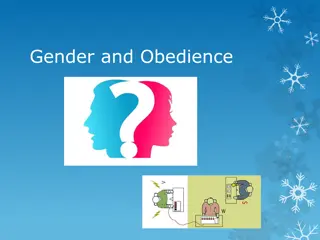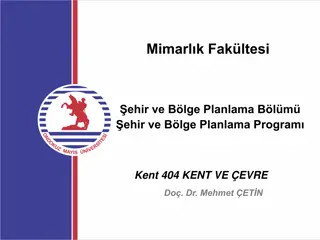
Study on Vertex Reconstruction Algorithm and Validity Classifications
Explore the study on vertex reconstruction algorithm and validity classifications in the field of fundamental interactions, comparing results with previous campaigns and highlighting the significance of assessing algorithm performance through distribution acquisition. The research delves into vertex classifications, Z positions, and the transition to a new configuration for improved efficiency.
Download Presentation

Please find below an Image/Link to download the presentation.
The content on the website is provided AS IS for your information and personal use only. It may not be sold, licensed, or shared on other websites without obtaining consent from the author. If you encounter any issues during the download, it is possible that the publisher has removed the file from their server.
You are allowed to download the files provided on this website for personal or commercial use, subject to the condition that they are used lawfully. All files are the property of their respective owners.
The content on the website is provided AS IS for your information and personal use only. It may not be sold, licensed, or shared on other websites without obtaining consent from the author.
E N D
Presentation Transcript
FOOT Study on vertex FACULTY OF PHYSICS CURRICULUM: Fundamental interactions: Theory and Experiment Luana Testa, Christian Finck, Marco Toppi Titolo Presentazione 09/24/2023 testa.1913445@studenti.uniroma1.it 1
Study on Vertex Vertex reconstruction algorithm Acquire distributions to assess the algorithm's performance: CNAO2023 Comparison with MC Comparison with previous campaign CNAO2022 GSI2021 Classification of Vertices: -1 no BM (check only for not valid vertex) 0 Diffusion 1 Valid vertex: is a fragmentation vertex 2 Nuclear reaction (not valid vertex consist of only one track) Luana Testa testa.1913445@studenti.uniroma1.it
Old configuration Valid and not valid vertex classifications Entries: Events with a single track in the BM and at least one track in the vertex Bin 0: event with 0 valid vertex Bin 1: event with 1 valid vertex Layer 3= OFF CNAO2023 Run: 6136 MC: CNAO23_PS Bin 0: event with 0 valid vertex Bin 1: event with 1 valid vertex Run: 6124 Titolo Presentazione 09/24/2023 Luana Testa testa.1913445@studenti.uniroma1.it
Layer 3= OFF GSI2021 CNAO2022 Run: 5468 Run: 4305 Luana Testa testa.1913445@studenti.uniroma1.it
Z position of valid vertex CNAO2023 Run: 6136 MC CNAO23_PS GSI2021 Run: 4305 CNAO2022 Run: 5468 Luana Testa testa.1913445@studenti.uniroma1.it
Old config.: 4 3 2 1. Event display BEAM X New config.: 1 2 3 4. run: 6136 event:536 run: 6136 event:384 By examining the event display, it was observed that for several events, the vertices appeared to be present but were oriented in the opposite direction. Now in Shoe the vertex is in the right position Still needed some inter-alignment (Chris) and alignements with other detectors (Yun) In the new configuration the inefficient layer is the number 2 From now on, the new configuration will be used Luana Testa testa.1913445@studenti.uniroma1.it
New configuration Valid Vertex Layer 2= OFF CNAO2023 Run: 6136 MC: CNAO23_PS Z position of valid vertex Run: 6136 MC Z [cm] Z [cm] Titolo Presentazione 09/24/2023 Luana Testa testa.1913445@studenti.uniroma1.it
Are we losing tracks? By examining the event display, it appears that with one of the four layers turned off (layer 2), and since we need at least three layers to reconstruct a track, some particles are not detected by one of the three functioning layers, making it impossible to track them. Additionally, it appears that there are significantly more flag 2 vertices in the data compared to the Monte Carlo (we will examine this in detail later). We are losing tracks? Is the threshold too high? TW points:3 charge : 2 charge : 3 charge : 1 Study: All run ->Threshold study Protons run Luana Testa testa.1913445@studenti.uniroma1.it
M28 Threshold M28 : 100 MeV Protons Energy for electron-hole pair production: 200 MeV Protons 1 GeV Protons (MIP) * NIST PSTAR program Luana Testa testa.1913445@studenti.uniroma1.it
entries= event with 1BM and at least 1 vtx-track Threshold studies with 2 cm All target These runs are referred to as threshold studies, but currently, from the logbook, it is not very clear whether only the inner track threshold is varied or also that of the vertex. Therefore, there are two possibilities: if only the inner track threshold is varied, the study on valid vertices does not provide useful information if the vertex threshold is also varied since the percentages of valid vertices remain consistent within uncertainties as the threshold varies, indicating that it does not appear to be a threshold dependence run valid vtx/entries 6064 (4,65 0.12)% 6065 (4,76 0.16)% 6066 (4,95 0.29)% 6067 (4,84 0.29)% 6068 (4,86 0.12)% MC (7.15 0.03)% Why do the data deviate so much from the MC? Are we losing particles (e.g., protons)? Can Flag 2 events be valid vertices that we can recover? Is it possible that some of the valid vertices we are observing have missing tracks, and if so, can we recover them? Luana Testa testa.1913445@studenti.uniroma1.it
Flag 2 In Shoe already implemented by Chris the code to flag the nuclear reaction (flag 2: only 1 track in vtx with > _MS) Up to now it was not used in reconstruction, we want put it back after fix some bags We are interested to recover event like: C -> B+p, with missing proton in the VD What the algorithm do: BM_direction -> _BM=direction.Theta() Trk_direction -> _Trk=Trk_direction.Theta() ( _BM- _Trk) < Scattering_angle Correction: BM_direction Trk_direction BM_direction.Angle(Trk_direction)< Scattering_Angle Scattering_angle: The angle obtained in this way seems to be too small, now all invalid tracks are assigned a flag of 2. An angle of 0.2 rad seems to be a better cut. A detailed study is expected in the future through the MC. *The Angle() method in ROOT calculates the angle between two vectors. Luana Testa testa.1913445@studenti.uniroma1.it
Some vertices lost We fix a small bug in the vertex algorithm, that was preventing to reconstruct some valid vertex! For each pair of tracks it create 2 vertices as the middle point of the intersection of the 2 tracks with the 2 plane Calculate the probability of each trace to belong to the found vertices A B If slope ==0? Sometimes (when the vtx is in the center of the target) the slope turns out to be 0, so the program enters the else and redefines B. It can happens that by doing so the vtx turns out to be outside the range in which it is searched for. Solution: When the slope is 0 we tighten the range at the two extremes A=A+0.1 and B=B-0.1 (0.1 for All and 0.01 for C and Poly). Luana Testa testa.1913445@studenti.uniroma1.it
Misposition of the vertexes with respect to the target (in data and in MC) CNAO2023: run 6136 CNAO2022: run 5468 GSI2021_MC Only in the MC campaigns: CNAO23PS_MC, CNAO2022_MC, GSI21PS_MC the position of the vertices is center in the target Is there some reconstruction algorithm effect or is only geometry? Luana Testa testa.1913445@studenti.uniroma1.it
Center of the target: MC GSI2021_MC CNAO2023_MC Event6_12C_CNAO2023_MC Event0_16O_C_400_1_GSI2021_MC The reconstructed MC deviates from the true MC (the dots). Solution: It was only a matter of geo-files to be fixed (not committed yet) Luana Testa testa.1913445@studenti.uniroma1.it
2. DATA VtxPosZ: 2.10 VtxPosZ: 1.90 GSI2021: run 4305 The shift appears to be associated with a measurement error: the vertexes position measurements is more precise CNAO2022: run 5468 VtxPosZ: 2.35 VtxPosZ: 1.90 Although the difference is very small (on the order of 2 mm) it has a significant impact when we require the vertex to be within the target CNAO2023: run 6136 VtxPosZ: 2.60 VtxPosZ: 2.35 Modified the geo files: not yet committed is Shoe Luana Testa testa.1913445@studenti.uniroma1.it
Pile-up Is the pile-up a real problem for the vtx? Looking at the events through DisplayFOOT we can see that the vertex is able to reconstruct the valid vertexes even when there are primaries in the same event, and at the same time if in an event there are multiple tracks but they are all primaries the algorithm is able to recognize them. If the valid vertex was the one matched with the BM and the fragments detected by subsequent detectors, could we recover this type of event? Luana Testa testa.1913445@studenti.uniroma1.it
PileUp GSI2021 CNAO2022 CNAO2023 Looking across different campaigns, we now observe a peak corresponding to the target in all of them. This is linked to the higher fragmentation probability within the target compared to that in air. However, upon closer examination, it appears that in GSI2021, valid vertices outside the target are present in higher percentages compared to other campaigns. Could this abundance of valid vertices outside the target be an effect of higher PileUp in GSI2021? Or is there some vertexes algorithm to be understood? Luana Testa testa.1913445@studenti.uniroma1.it
Next steps Study of post-tracking Studies on layer 2 (Activating it introduces only noise or, despite its low efficiency, it allows us to recover some tracks?) Efficiency studies for different configuration (protons 100-200 MeV, C 200 MeV, O 200-400 MeV) PileUp studies: Differences between the different campaigns Using the global tracking are we able to recover some valid vertex that have PileUp? Interesting Aspects to Explore Use the proton runs on All and with the help of the inner track to measure the efficiencies of the vertex layers Potential Measurements for CNAO2024 Using a new layer 2 to estimate efficiencies of the other 3 layers (if efficiency does not decrease over time) Luana Testa testa.1913445@studenti.uniroma1.it
Thank you for your attention! Luana Testa testa.1913445@studenti.uniroma1.it



